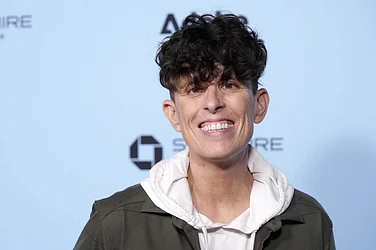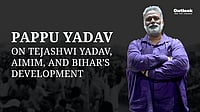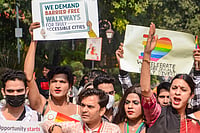The moment someone yells “Gird your loins!” in The Devil Wears Prada, you know Miranda Priestly’s about to storm in, Runway magazine tucked under her arm. The staff clutters around because her arrival creates chaos. She’s terrifying, sure, but it’s not the fear — it’s her demand for perfection that keeps everyone on edge. They’ve got this quiet routine packed for every day: placing magazines on her desk, a glass of water, and swapping comfy slippers for uncomfortable high heels. It’s all small scenes, but it creates a great impact. Miranda’s presence keeps them jittery, always chasing a standard nobody can quite hit.
The movie is an adaptation of the 2003 novel of the same name by Lauren Weisberger and is considered a roman à clef, as the author had served as the personal assistant to Anna Wintour, Vogue’s editor-in-chief. Miranda has that iconic bob, those oversized shades, and a demure vibe that screams Wintour. The resemblance is uncanny. Wintour herself shrugged it off in a BBC interview, saying, “It’s up to the audience and my colleagues to decide if I’m anything like Miranda Priestly.”
The fashion crowd and fans wouldn’t let the comparison go. Maybe it’s Wintour’s mystique or how she commands a room without even trying.
Wintour’s been in the hot seat over fashion’s demanding beauty standards. In her interview with Oprah, she told the host to drop some weight and pick out her own clothes, which led to backlash. Later, she called it “just a gentle push.” André Leon Talley, Vogue’s former editor-at-large, publicly acknowledged Wintour’s rigid standards: “Most of the Vogue girls are stick-thin because Anna’s not into bigger folks.” When someone with problematic standards runs a leading organisation like Vogue, their opinions don’t just sit there, they shape the standards for the entire industry.
Wintour, through Vogue over the years, has pushed an image that revolves around wealth, skinniness, and whiteness — something the fashion industry has struggled to come out of, especially with the push for inclusivity in the recent era. The New York Times also revealed a toxic work culture within Vogue offices, reporting on abusive language in internal emails. Wintour owned up to it, saying, “I’ve messed up plenty, and it’s on me to fix it.” But for a lot of staff, that apology felt more like damage control.
Fashion designer Rei Kawakubo, known for her 1997 collection ‘Body Meets Dress, Dress Meets Body’, unlike Wintour, has been hailed for dismantling and questioning beauty standards set by the fashion industry. To critics, she resides on the other side of the spectrum from Wintour, with many accusing Vogue of not giving space to Kawakubo. So when the 2017 Met Gala celebrated the designer with the theme “Rei Kawakubo/Comme des Garçons: Art of the In-Between", it felt like Wintour had finally bowed down. Yet, in an interview, Wintour remarked, “If you’re not a fashion obsessive…you’re going to be incredibly baffled.”
Wintour has been leading the Met Gala since 1995, transforming a charity event into the fashion event of the year. It is where art, fashion and politics collided. Her own style is a part of the heritage, like the 2019 pink Chanel gown with feathers and diamonds. But in 2020, with the ‘Black Lives Matter’ movement spreading globally, Vogue was called out for sidelining Black employees, including designers, photographers and other editorial staff. Wintour sent an apology to her team, admitting she hadn’t done enough for Black voices. For a magazine that set fashion’s tone worldwide, it was deemed unacceptable and ignorant by readers and critics.
Wintour’s influence was huge, but so was the pushback. As the industry started considering inclusion and accountability, it moved past her old-school approach. The Vogue editor-in-chief stepped down after 37 years in 2025. She will reportedly continue as Vogue’s global editorial director and as chief content officer for Condé Nast, but we are yet to see if this marks the end of a defining chapter in fashion history, or if she continues to have a stronghold.






















